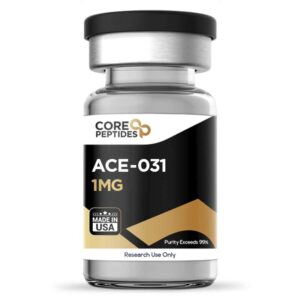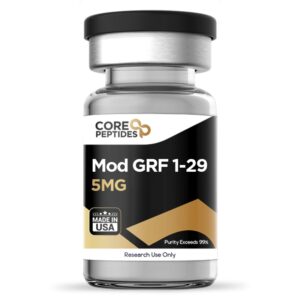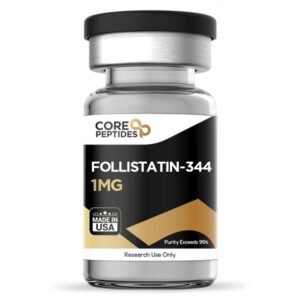Description
ARA-290 Peptide (Cibinetide / HBSP)
Overview
ARA-290, also known as cibinetide or helix B surface peptide (HBSP), is an 11-amino acid peptide derived from the beta domain of erythropoietin (EPO). Unlike full-length EPO, ARA-290 is non-erythropoietic, meaning it does not stimulate red blood cell production. Instead, it is primarily investigated for tissue-protective, regenerative, anti-inflammatory, anti-nociceptive, and immunomodulatory properties.
The peptide acts through the innate repair receptor (IRR), a heteromeric receptor composed of the EPO receptor and beta common receptor (CD131). This receptor is expressed on various cell types, including immune cells, endothelial cells, and neural tissues, and is thought to mediate tissue repair and protection without hematopoietic effects.
Chemical Composition and Structure
-
Molecular Formula: C51H54N16O21
-
Molecular Weight: 1257.3 g/mol
-
Other Names: PH-BSP, Helix B Surface Peptide, Cibinetide
Mechanisms of Action
-
Tissue Protection and Regeneration
-
Binds to TPR/IRR receptors on tissue and immune cells.
-
Activates downstream pathways such as PI3K-Akt and JAK2-STAT5, promoting cell survival, proliferation, and protection against apoptosis.
-
May reduce tissue scarring and enhance wound healing in experimental models.
-
Does not trigger erythropoiesis, minimizing cardiovascular or hematologic side effects associated with EPO.
-
-
Anti-Nociceptive Effects
-
May modulate TRPV1 (Transient Receptor Potential Vanilloid 1) channels, which mediate nociception in response to thermal, chemical, or mechanical stimuli.
-
In murine studies, ARA-290 increased the activation threshold of TRPV1, potentially reducing pain signaling without affecting other sensory channels.
-
Demonstrates potential in mitigating nerve injury-induced or allodynia-related pain.
-
-
Anti-Inflammatory and Immunomodulatory Effects
-
Suppresses pro-inflammatory cytokine production such as IL-6, IL-12, and TNF-α from macrophages.
-
May reduce NF-κB-mediated transcription of pro-inflammatory genes.
-
Potentially fine-tunes adaptive immune responses via dendritic cells, reducing transplant rejection or autoimmunity in experimental models.
-
Exhibits protective effects on pancreatic islet cells in cytokine-rich environments, decreasing apoptosis and preserving function.
-
-
Retinal and Endothelial Protection
-
May protect retinal tissue under ischemic conditions by supporting endothelial colony-forming cells (ECFCs).
-
Reduces oxidative stress and inflammatory cytokine expression in ischemic retinal tissue.
-
Promotes vascular repair and regeneration in retinal ischemia models, potentially mitigating retinal diseases associated with ischemic injury.
-
-
Cytoprotective Pathways
-
Activates survival signaling via PI3K-Akt and JAK2-STAT5 pathways.
-
Reduces apoptosis in tissues exposed to inflammatory or oxidative stress.
-
May decrease local tissue inflammation and immune-mediated damage, aiding in recovery and repair processes.
-
Research and Experimental Applications
-
Nerve injury and neuropathic pain models: Evaluating TRPV1-mediated nociception modulation.
-
Pancreatic islet transplantation: Protecting islet viability against cytokine-induced apoptosis.
-
Retinal ischemia and vascular repair: Supporting endothelial cell survival and neovascularization.
-
Inflammation and autoimmune studies: Modulating macrophage and dendritic cell activity.
-
Tissue regeneration: Promoting wound healing and reducing scarring without affecting red blood cell counts.
Note: ARA-290 is intended for research and laboratory use only. Not approved for human therapeutic use outside clinical trials.
References
-
What is Erythropoietin? Home Health Network. https://www.hormone.org/your-health-and-hormones/glands-and-hormones-a-to-z/hormones/erythropoietin
-
Brines M, Cerami A. The receptor that tames the innate immune response. Mol Med. 2012;18(1):486–496. https://pubmed.ncbi.nlm.nih.gov/22183892/
-
Dahan A, et al. ARA 290 improves symptoms in patients with sarcoidosis-associated small nerve fiber loss and increases corneal nerve fiber density. Mol Med. 2013;19:334–345. https://www.ncbi.nlm.nih.gov/pmc/articles/PMC3883966/





Reviews
There are no reviews yet.